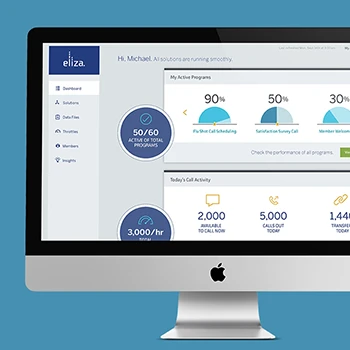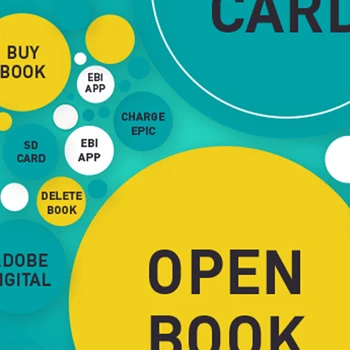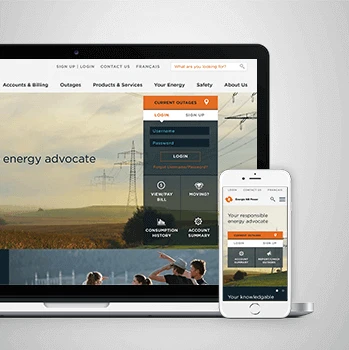What makes service design different from product or UX design?
Service design takes the big picture view of experiences, focusing on how users move between products and content that make up the complete service experience. While product design optimizes individual touchpoints, service design orchestrates the connections between touchpoints, uncovering blockers, friction points, and siloed technologies on both business and user sides to create cohesive end-to-end experiences.
Tip: Look for service designers who can articulate how individual touchpoints connect rather than just optimizing isolated interactions.
How do service designers approach service blueprinting and organizational mapping?
Service blueprinting maps organizational structure to external experience delivery, capturing how people, processes, technology, and business components enable customer-facing experiences. Service designers create blueprints that show front-stage and back-stage actions, support processes, and internal visibility lines that connect organizational capabilities to customer journey phases.
Tip: Evaluate service designers based on their ability to map both customer-facing experiences and internal organizational processes that support service delivery.
What research methods do service designers use to understand end-to-end experiences?
Service research combines observational, participatory, and ethnographic methods including contextual inquiry, mystery shopping, stakeholder interviews, experience mapping, and workshops. The focus is understanding how users move between different products and content, not just individual interactions. Research captures the bridges and connections that make up the complete service experience.
Tip: Ask for examples of service research that revealed connection points between different touchpoints rather than just individual interaction improvements.
How do service designers integrate Experience Thinking across brand, content, product, and service areas?
Service designers use Experience Thinking framework to orchestrate brand, content, product, and service experiences into cohesive journeys. They design connecting experiences that transition users seamlessly between different experience areas, ensuring each quadrant reinforces the others while maintaining consistent experience quality throughout the complete lifecycle.
Tip: Look for service designers who can demonstrate how they've connected different experience areas rather than just working within single domains.
What's the service designer's approach to journey mapping and lifecycle design?
Journey mapping captures end-to-end interaction patterns from initial awareness through service cancellation or renewal. Service designers map complete experience lifecycles, identifying all phases, emotions, and interaction points that customers go through before, during, and after using services. This creates frameworks for positioning detailed experience elements within the broader lifecycle context.
Tip: Ask to see journey maps that show complete lifecycles rather than just primary usage scenarios to understand their comprehensive approach.
How do service designers handle stakeholder analysis and organizational alignment?
Service designers conduct internal and external stakeholder analysis to understand how different groups perceive service impact, capture business requirements from all organizational parts, and facilitate collaborative sessions to align diverse perspectives. They work with leadership, operations, customer-facing staff, and support functions to create unified service vision.
Tip: Evaluate service designers based on their experience facilitating cross-functional alignment rather than just individual stakeholder interviews.
What testing and validation methods do service designers employ?
Service testing includes service staging, service walkthroughs, and service role-playing that test human, product, and spatial aspects of service experiences. These methods validate complete service scenarios rather than individual touchpoints, ensuring all components work together effectively to deliver intended experiences before full implementation.
Tip: Ask about specific service testing methods they use to validate complete experience flows rather than just individual interface or process testing.
How do service designers develop service experience strategy and vision?
Service strategy articulates concrete goals and vision for experiences in both business and audience contexts. Designers create frameworks that define purpose, success metrics, competitive positioning, and organizational impact. Strategy connects service initiatives to broader business objectives while maintaining user-centered focus throughout planning and execution phases.
Tip: Look for service designers who can connect service improvements directly to business outcomes rather than just describing user experience enhancements.
What's the service designer's approach to competitive landscape analysis?
Service competitive analysis examines complete experience ecosystems rather than individual features, understanding how organizations deliver end-to-end value and identifying service differentiation opportunities. Designers analyze similar service experiences across different industries to understand best practices and innovation opportunities that transcend direct competition.
Tip: Ask for competitive analysis examples that reveal service delivery insights rather than just feature comparisons to understand their strategic thinking depth.
How do service designers identify service innovation opportunities?
Service innovation opportunities emerge from environmental disruption, market intelligence scanning, and internal vision development. Designers explore new service possibilities through collaborative workshops, stakeholder engagement, and trend analysis. Innovation in services often lies below the surface, requiring systematic exploration to identify transformational opportunities.
Tip: Evaluate service designers based on their ability to identify systemic improvement opportunities rather than just incremental touchpoint optimizations.
What's the service designer's methodology for service architecture development?
Service architecture creates foundational structure including business goals, people requirements, technology needs, and process workflows that enable experience delivery. Designers map internal organizational structure to external experience delivery, ensuring sustainable service operations that can support excellent experiences over time while scaling effectively.
Tip: Ask how service designers would approach organizational readiness assessment for your specific service improvement goals to understand their practical implementation thinking.
How do service designers approach service lifecycle and renewal design?
Service lifecycle design considers complete customer relationship progression including awareness, research, purchase, usage, maintenance, renewal, and replacement phases. Designers create connected experiences that support customer evolution through different relationship stages while identifying opportunities for deeper engagement and value creation throughout the lifecycle.
Tip: Focus on service designers who understand your specific industry's customer lifecycle patterns rather than generic service lifecycle approaches.
What's the service designer's approach to service discovery and opportunity assessment?
Service discovery involves systematic exploration of distinct experience options through collaborative stakeholder sessions, creative workshops, and strategic visioning. Designers facilitate exploration processes that capture anticipated experiences, narrow options to reasonable approaches, and secure stakeholder buy-in for service initiatives that align with organizational goals.
Tip: Look for service designers who can facilitate strategic discovery sessions rather than just presenting pre-determined service improvement recommendations.
How do service designers measure service success and establish key metrics?
Service success measurement includes user experience metrics, business performance indicators, operational efficiency measures, and loyalty tracking across the complete service lifecycle. Designers establish baseline measurements, define success criteria, and create monitoring systems that track both immediate service improvements and long-term relationship impact.
Tip: Ask service designers to propose specific success metrics relevant to your service context rather than accepting generic measurement approaches.
What's the service designer's approach to ethnographic research and contextual inquiry?
Service ethnography involves observational research, job shadowing, and contextual inquiry to understand day-in-the-life patterns and service interactions within real usage contexts. Designers use ethnographic approaches to capture behavior patterns, environmental factors, and service ecosystem dynamics that influence experience quality beyond individual touchpoints.
Tip: Prioritize service designers with ethnographic research experience in contexts similar to your service environment rather than general observational research skills.
How do service designers conduct stakeholder workshops and collaborative research?
Service workshops engage internal and external stakeholders to understand requirements, business context, and experience perspectives through structured collaborative sessions. Designers facilitate group discussions, small group exercises, and creative activities that capture diverse viewpoints while building shared understanding of service improvement opportunities and organizational alignment.
Tip: Ask for examples of workshop outcomes that led to actionable service improvements rather than just general stakeholder engagement descriptions.
What's the service designer's methodology for mystery shopping and service evaluation?
Mystery shopping involves systematic service experience evaluation from customer perspective, documenting actual service delivery quality, identifying friction points, and comparing intended versus actual experience delivery. This research method reveals service performance gaps and provides baseline understanding of current state service quality across different scenarios and touchpoints.
Tip: Look for service designers who can design mystery shopping protocols specific to your service context rather than using generic evaluation approaches.
How do service designers approach experience mapping and journey documentation?
Experience mapping captures holistic lifecycle phases, emotions, and interaction points that customers experience before, during, and after service usage. Service designers create maps that show both customer-facing experiences and internal organizational processes, revealing service delivery gaps and improvement opportunities across the complete experience ecosystem.
Tip: Evaluate experience maps based on their ability to reveal specific improvement opportunities rather than just documenting current state customer journeys.
What's the service designer's approach to persona development and customer segmentation?
Service personas capture distinct customer and user behavioral patterns, motivations, and service interaction preferences across different service lifecycle phases. Designers develop personas through stakeholder interviews, usage scenario analysis, and behavioral segmentation that reveals different service needs and experience expectations for various customer types.
Tip: Ask for persona examples that show different service usage patterns rather than just demographic segmentation to ensure behavioral insight depth.
How do service designers conduct surveys and quantitative service research?
Service surveys quantify experience quality, satisfaction levels, and behavioral patterns across different service touchpoints and lifecycle phases. Designers create survey instruments that measure both attitudinal and behavioral aspects of service experience, providing statistical validation for qualitative research insights and baseline measurements for improvement tracking.
Tip: Look for service designers who can design survey approaches that complement qualitative insights rather than replacing observational research methods.
What's the service designer's methodology for focus groups and collaborative research sessions?
Service focus groups explore service improvement opportunities, validate experience concepts, and gather diverse perspectives on service delivery quality. Designers facilitate structured discussions that reveal service pain points, desired improvements, and customer expectations while building understanding of service ecosystem dynamics and customer relationship patterns.
Tip: Ask about specific focus group insights that influenced service design decisions rather than general facilitation experience to understand research impact quality.
How do service designers approach service specification and implementation guidance?
Service specifications include detailed service patterns, experience guidelines, and implementation frameworks that enable consistent service delivery across different channels and contexts. Designers create documentation that guides staff behavior, operational processes, and technology requirements while maintaining service quality standards during implementation and scaling phases.
Tip: Evaluate service specifications based on their practical usability for implementation rather than just comprehensive documentation completeness.
What's the service designer's methodology for service delivery support and quality assurance?
Service delivery support includes ongoing design guidance, quality monitoring, implementation review, and experience optimization during service launch and operation phases. Designers provide continuous support to ensure service delivery matches design intent while adapting to real-world constraints and customer feedback that emerges during actual service operation.
Tip: Ask about specific examples of post-launch service optimization to understand their commitment to ongoing service quality rather than just initial design delivery.
How do service designers handle service experience testing and validation?
Service testing includes pilot projects, role-playing sessions, simulation workshops, and staged service delivery validation that tests complete service scenarios before full implementation. Testing approaches validate both customer-facing experiences and internal operational processes to ensure service architecture supports intended experience quality effectively.
Tip: Look for service designers who can design testing approaches that validate both customer experience and operational feasibility rather than just user interface testing.
What's the service designer's approach to staff training and capability development?
Service implementation requires staff training on service standards, experience delivery expectations, and customer interaction protocols that maintain service quality across different scenarios and touchpoints. Designers develop training programs, operational guidelines, and support materials that enable consistent service delivery by diverse staff members.
Tip: Ask how service designers would approach training development for your specific staff roles and service context rather than accepting generic training approaches.
How do service designers approach technology integration and system requirements?
Service technology integration involves defining system requirements, connection protocols, and operational technology that supports service delivery across different channels. Designers understand how technology enables service experiences while ensuring technical solutions support rather than constrain optimal service delivery and customer experience quality.
Tip: Evaluate service designers based on their ability to balance technology capabilities with experience requirements rather than just technical system knowledge.
What's the service designer's methodology for process design and workflow optimization?
Service process design covers tasks, procedures, and workflows that enable consistent service delivery while identifying what needs to be created, modified, or eliminated from existing operations. Designers create process frameworks that support both customer-facing experiences and internal operational efficiency throughout service delivery.
Tip: Look for service designers who can optimize existing processes rather than requiring complete operational redesign to ensure practical implementation feasibility.
How do service designers handle change management and organizational adoption?
Service change management involves stakeholder communication, adoption planning, and organizational transformation support that enables successful service improvement implementation. Designers facilitate organizational change processes, address resistance, and create adoption strategies that ensure service improvements are actually implemented rather than just designed.
Tip: Ask about specific change management challenges they've navigated to understand their practical experience with organizational transformation rather than just design capability.
How do service designers approach continuous service improvement and optimization?
Service optimization involves ongoing monitoring, feedback collection, and iterative improvement that maintains service quality while adapting to changing customer needs and market conditions. Designers create systems for continuous service evolution, performance tracking, and experience enhancement that keep services relevant and effective over time.
Tip: Look for service designers who can establish ongoing optimization processes rather than just one-time service improvement projects.
What's the service designer's approach to service performance measurement and analytics?
Service performance measurement combines customer satisfaction tracking, operational efficiency metrics, and business impact analysis across different service touchpoints and lifecycle phases. Designers establish measurement frameworks that connect service quality to business outcomes while identifying specific improvement opportunities through data analysis.
Tip: Ask service designers to propose measurement approaches specific to your service context rather than accepting generic performance metrics.
How do service designers handle service scaling and expansion challenges?
Service scaling involves maintaining experience quality while expanding service delivery capacity, geographic reach, or customer base. Designers create scalable service architectures, standardized processes, and quality control systems that enable service growth without compromising experience quality or operational effectiveness.
Tip: Evaluate service designers based on their experience with scaling challenges similar to your anticipated growth rather than general scaling knowledge.
What's the service designer's methodology for service ecosystem management?
Service ecosystem management involves coordinating multiple service components, partners, technology systems, and organizational functions that contribute to complete service delivery. Designers create governance frameworks, communication protocols, and coordination systems that ensure ecosystem components work together effectively to deliver consistent experiences.
Tip: Look for service designers who understand ecosystem complexity relevant to your industry rather than simple linear service delivery models.
How do service designers approach service recovery and failure handling?
Service recovery design includes failure prevention, problem detection, and recovery processes that maintain customer relationships when service delivery doesn't meet expectations. Designers create recovery protocols, staff empowerment guidelines, and communication strategies that turn service failures into opportunities for stronger customer relationships.
Tip: Ask about specific service recovery scenarios relevant to your service type to understand their practical approach to failure handling rather than just theoretical recovery design.
What's the service designer's approach to service innovation and future adaptation?
Service innovation involves identifying emerging opportunities, adapting to changing customer expectations, and integrating new technologies or capabilities that enhance service value. Designers create innovation frameworks, trend monitoring systems, and adaptation processes that keep services current while maintaining operational effectiveness.
Tip: Look for service designers who can identify specific innovation opportunities for your service context rather than general innovation capability claims.
How do service designers handle multi-channel service coordination and consistency?
Multi-channel service design ensures consistent experience quality across different service delivery channels while respecting channel-specific capabilities and customer preferences. Designers create channel strategies, consistency guidelines, and coordination protocols that enable seamless service delivery regardless of customer channel choices.
Tip: Evaluate service designers based on their experience coordinating channels relevant to your service delivery model rather than general omnichannel knowledge.
How do service designers facilitate cross-functional collaboration and stakeholder alignment?
Service collaboration involves coordinating diverse organizational functions, external partners, and customer groups that contribute to service delivery. Designers facilitate alignment sessions, create shared frameworks, and establish communication protocols that enable effective collaboration while maintaining service quality standards across different organizational areas.
Tip: Ask for examples of specific collaboration challenges they've resolved rather than general facilitation experience to understand their practical organizational navigation skills.
What's the service designer's approach to working with operational and front-line staff?
Front-line collaboration involves understanding operational constraints, capturing staff insights about service delivery challenges, and incorporating front-line perspectives into service improvement design. Designers work directly with customer-facing staff to identify practical improvement opportunities and ensure service designs are implementable within operational realities.
Tip: Look for service designers who prioritize front-line staff input rather than just management perspectives to ensure practical service improvement approaches.
How do service designers engage customers in co-design and collaborative improvement?
Customer co-design involves participatory design methods, collaborative workshops, and ongoing customer input that shapes service improvement direction. Designers facilitate customer involvement in service design processes while balancing customer desires with operational feasibility and business objectives throughout collaborative design sessions.
Tip: Ask about specific co-design outcomes that influenced service improvements rather than just customer engagement descriptions to understand collaborative design effectiveness.
What's the service designer's methodology for leadership engagement and executive communication?
Leadership engagement involves translating service improvements into business impact terms, securing resource commitment, and maintaining executive support throughout service transformation initiatives. Designers communicate service value in strategic terms while providing practical progress updates that maintain leadership confidence in service improvement investments.
Tip: Evaluate service designers based on their ability to communicate with your specific leadership style and business context rather than general executive communication skills.
How do service designers handle external partner coordination and vendor management?
External partner coordination involves aligning third-party service delivery with internal service standards, creating coordination protocols, and managing vendor relationships that support complete service experiences. Designers ensure external partners contribute positively to service quality while maintaining consistency with internal service delivery standards.
Tip: Ask about specific partner coordination challenges they've managed to understand their experience with vendor relationships relevant to your service ecosystem.
What's the service designer's approach to interdepartmental communication and silo breaking?
Silo breaking involves identifying organizational barriers that fragment service delivery, creating communication bridges between departments, and establishing shared service objectives that align different organizational functions. Designers facilitate cross-departmental understanding while creating systems that support collaborative service delivery.
Tip: Look for service designers who can identify specific silo challenges in your organizational context rather than generic cross-functional collaboration approaches.
How do service designers build internal service design capabilities and knowledge transfer?
Capability building involves sharing service design methods, training internal professionals, and creating organizational systems that support ongoing service improvement beyond external engagement. Designers develop internal service design capabilities while providing frameworks and tools that enable continued service optimization after project completion.
Tip: Ask about specific capability transfer examples to understand their commitment to building internal service design competency rather than creating dependency relationships.
How are AI tools transforming service design research and analysis capabilities?
AI integration in service design includes automated pattern recognition in customer feedback, service performance analytics, predictive modeling for service demand, and natural language processing for stakeholder input analysis. AI tools accelerate service research analysis while human designers focus on strategic interpretation, service architecture design, and stakeholder collaboration that requires empathy and creative problem-solving.
Tip: Ask service designers about their experience with AI tools for service analysis while ensuring they maintain human-centered service design principles rather than over-relying on automated insights.
What's the service designer's approach to designing AI-enhanced service experiences?
AI-enhanced service design involves integrating chatbots, predictive personalization, automated service routing, and intelligent service recommendations while maintaining human connection and service quality. Designers create service experiences where AI enhances rather than replaces human service delivery, ensuring customers understand AI involvement and retain access to human support when needed.
Tip: Look for service designers who can balance AI efficiency with human service quality rather than defaulting to automated solutions for cost reduction alone.
How do service designers approach digital transformation and technology integration?
Digital transformation involves integrating new technologies into existing service delivery while maintaining service quality and customer relationships. Designers create technology adoption strategies that enhance service capabilities rather than disrupting successful service relationships, ensuring digital solutions support rather than complicate service experiences.
Tip: Evaluate service designers based on their ability to integrate technology gradually rather than requiring complete service digitization to ensure practical transformation approaches.
What's the service designer's methodology for omnichannel service design and platform integration?
Omnichannel service design creates consistent experience quality across digital and physical service channels while respecting channel-specific capabilities and customer preferences. Designers integrate platform technologies, data sharing systems, and service protocols that enable seamless service delivery regardless of customer channel choices throughout their service journey.
Tip: Ask how service designers would approach channel integration for your specific service delivery model rather than accepting generic omnichannel strategies.
How do service designers handle data privacy and security in service experience design?
Privacy-conscious service design involves transparent data usage policies, consent management systems, and security protocols that protect customer information while enabling personalized service delivery. Designers create service experiences that build customer trust through clear privacy practices and secure data handling throughout all service interactions.
Tip: Look for service designers who understand privacy regulations relevant to your industry rather than generic data protection approaches.
What's the service designer's approach to emerging technology assessment and adoption?
Emerging technology assessment involves evaluating new capabilities for service enhancement potential, understanding adoption implications, and creating implementation strategies that improve service delivery without disrupting successful operations. Designers assess technologies based on service improvement value rather than just technical novelty or industry trends.
Tip: Ask service designers to evaluate specific emerging technologies relevant to your service context rather than accepting general technology adoption frameworks.
How do service designers integrate service analytics and performance monitoring systems?
Service analytics integration involves selecting monitoring tools, establishing performance dashboards, and creating data analysis workflows that provide actionable insights about service quality and improvement opportunities. Designers ensure analytics support service optimization decisions rather than just providing general performance reporting.
Tip: Look for service designers who can recommend analytics approaches specific to your service improvement goals rather than generic monitoring solutions.












